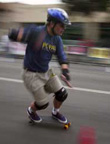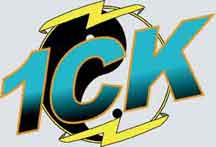Jani Soderhall wrote:I think we have a real concern here if the ISSA BOD makes statements such as the above.
Well, if you don't think precision is important, why do you record 1/1000's? And if we accept a certain "reasonably low" random error. Wouldn't we be better off recording 1/100s instead?
I think this is big concern. Time is all I care about and here you state, that it's not that important. It's worrying.
For sure I don't trust JRAD to do the "professional" testing for us, but I'm sending him a timer to check out the PC output.
/Jani
The ISSA BOD has made no statement on timing system precision, accuracy, repeatability, or other attributes. My statement is made by myself, and does not represent the official ISSA BOD policy. If some statement about timing system attributes should become an ISSA policy or requirement or rule, it will be clear in the publication that it is official ISSA policy (rather than Pat Chewning's opinion).
Jani, I think you misunderstood my points.
My 1st point is that there are various elements that can contribute to the inaccuracy, or errors of a timing system. Some of these elements are more important than others.
My 2nd point is that all timing systems have errors and inaccuracies, it is only the magnitude that differs from one system to the next.
My 3rd point is that Slalom Skateboarding probably has some maximum magnitude of error or inaccuracy beyond which a timing system becomes "useless" for our application. I don't know what that limit is. (e.g. Is 1/1000" close enough? Is 1/500" How about 1/200"? )
My 4th point is that of all the errors that might influence the final results of a race, it is my belief that the timing system is one of the smaller potential errors.
My 5th point is that choosing timing requirements, buying and testing systems, and qualifying and monitoring those systems is a task outside of the RACING RULES, and a process that I don't think the ISSA is ready to take on. (My personal opinion)
Finally, you have now introduced another attribute "PRECISION" which is entirely different from accuracy, repeatability, reproducability, and error. All of these attributes have specific meanings and they are not interchangeable.










